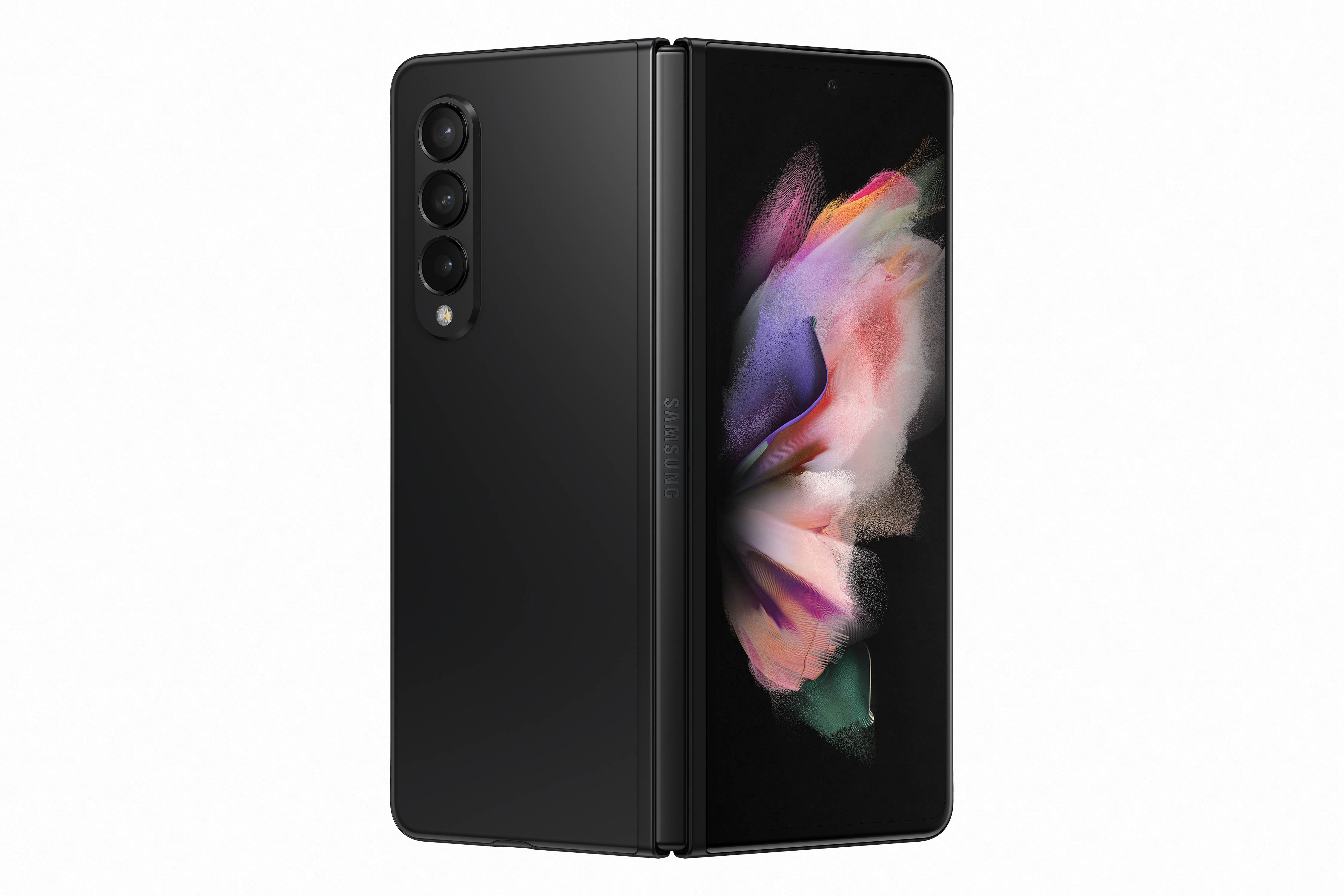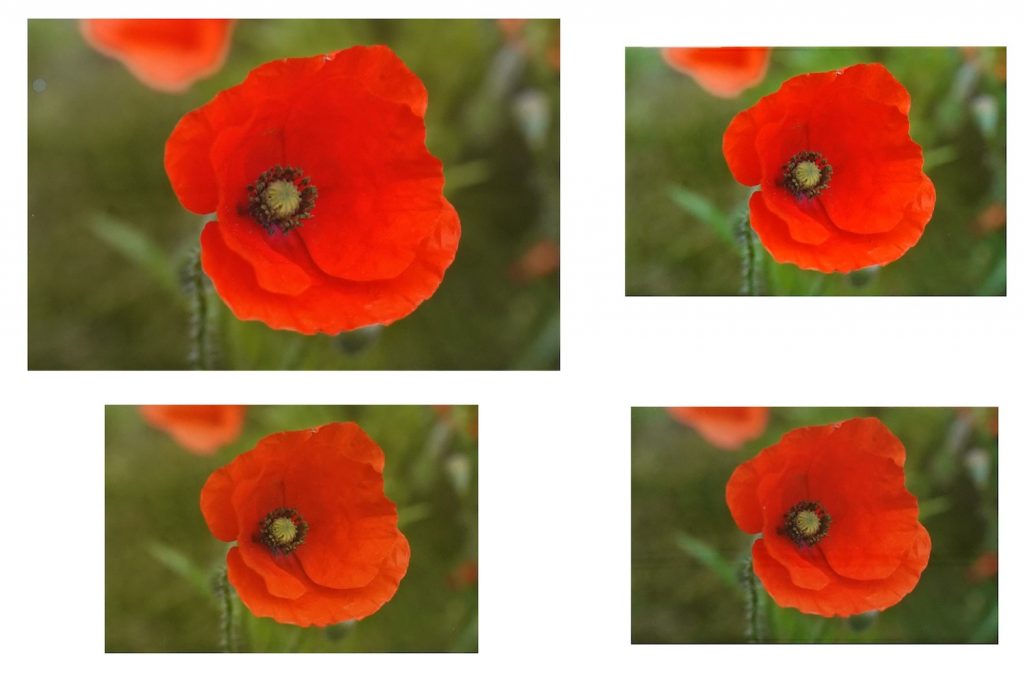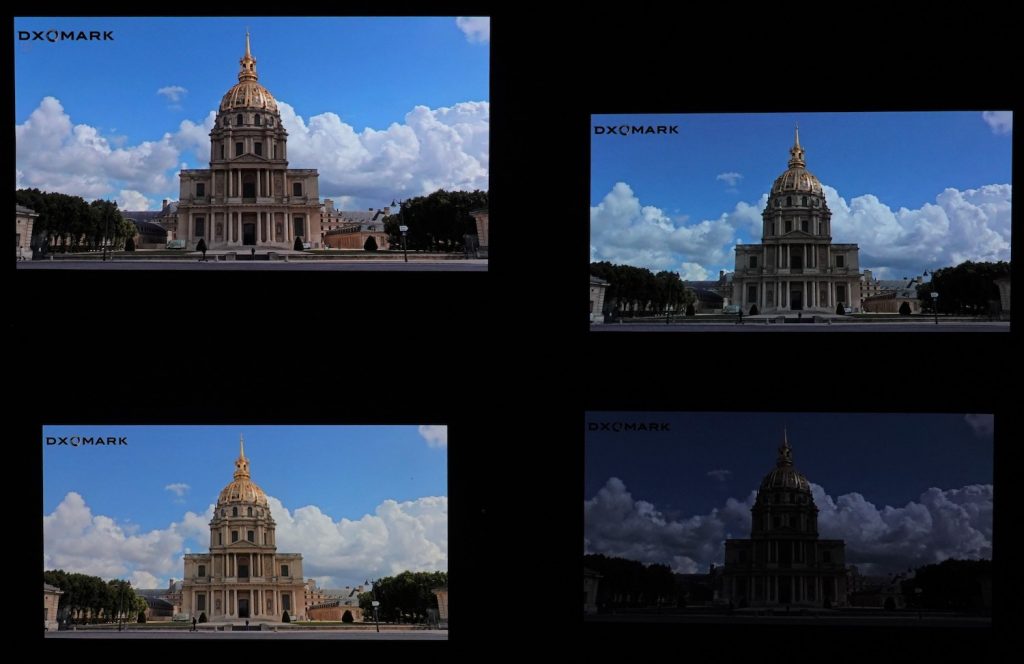The Samsung Galaxy Z Fold3 5G is the latest update to the Z Fold line, with a display that unfolds to 7.6″ — truly enormous by smartphone standards. Along with the big screen comes a big price tag, exceeding that of many laptops. The Z Fold3 also has 6.2″ display on the outside when folded. We put the main screen through our display protocol test.
Key display specifications:
- Display Type: Dynamic AMOLED 2X, 1200 nits maximum brightness
- Display: 7.6″ (89.3% screen-to-body ratio)
- Dimensions: 158.2 x 128.1 x 6.4 mm. When folded: 158.2 x 67.1 x 16.0-14.4 mm.
- Resolution: 2208 x 1768 pixels
- Aspect ratio: 22.5:18. (~374 ppi density)
- Refresh rate: 120 Hz adaptive
- Chipset: Qualcomm Snapdragon 888
About DXOMARK Display tests: For scoring and analysis in our smartphone and other display reviews, DXOMARK engineers perform a variety of objective and perceptual tests under controlled lab and real-life conditions. This article highlights the most important results of our testing. Note that we evaluate display attributes using only the device’s built-in display hardware and its still image (gallery) and video apps at their default settings. (For in-depth information about how we evaluate smartphone and other displays, check out our articles, “How DXOMARK tests display quality” and “A closer look at DXOMARK Display testing.”)
Test summary
Scoring
Sub-scores and attributes included in the calculations of the global score.
 Samsung Galaxy Z Fold3 5G
Samsung Galaxy Z Fold3 5G


 33rd
33rd
 24th
24th
Pros
- The brightness is adapted when watching HDR10 video content.
- Very smooth in most use cases, including playing video games, web browsing, or scrolling in the gallery app.
- Touch is very accurate on the whole display area.
Cons
- Display is not very readable outdoors.
- A yellow cast and oversaturated colors are noticeable in most tested conditions.
- The crease is visible in most conditions.
The Samsung Galaxy Z Fold3’s score of 89 puts it in elite company — among the top 10 devices in our database in the Ultra Premium smartphone category. The Z Fold3 lost some points in readability because it is not bright enough outdoors; otherwise, its score would have been even higher. It performed particularly well in video and artifacts categories.
For the purposes of this review, we’re only reviewing the unfolded interior screen, not the exterior one. Worth noting: Because of its narrow shape, the exterior display is well suited for notifications and messages, but not ideal for watching videos or gaming.
On top of its strong overall performance, the Z Fold3 is an outlier because of the size of its unfolded display. As you can see in the illustration below, it is enormous compared with even the largest non-folding smartphones. That big screen is really advantageous for viewing content, be it pictures or text. It loses some (but not all) of that advantage when it is used for viewing video or playing games, which you can also see in the illustrations below. Neither form of content adapts very well.



Readability
Samsung Galaxy Z Fold3 5G
68
76
The Z Fold3 is very functional in indoor conditions, but lacks brightness outdoors, making content difficult to perceive; darker details are lost, especially in direct sunlight. In low-light conditions, the device can seem a little too bright, even dazzling. The Samsung device adapts quickly to changing light conditions.
The graphs below show the Samsung Galaxy Z Fold3 5G’s brightness and contrast under different lighting environments and results from other devices for comparison:
The Samsung Z Fold3 5G lacks brightness in outdoor conditions, as you can see in the photo illustration made in the shade below, especially in comparison with the Samsung Galaxy S21 Ultra 5G (Exynos), at its immediate right.




Color
Samsung Galaxy Z Fold3 5G
81
92
The Z Fold3 shows a yellowish cast and oversaturated colors in indoor conditions.

Outdoors, colors are also oversaturated, and an orangish cast is visible, both in sunlight and the shade. When viewed at an angle, there’s a shift toward blue. The device is mostly uniform, but slightly redder along the bottom of the display. When the blue light filter is on, a slight shift toward yellow is observable.
The charts below show the color reproduction fidelity in 1000 lux lighting in the standard sRGB color space and in DC1-P3 color space. The center of each circle is the target color; anything outside the circle represents a noticeable color difference. The further the tip of the arrow is outside of the circle, the more a user will notice the difference between the color on the display and the original color of the source material.




Video
Samsung Galaxy Z Fold3 5G
88
91
The Z Fold3 5G displays a proper brightness when displaying HDR10 content. Midtones and dark tones are fairly well rendered. A slight halo can sometimes be seen on very dark content.

When watching HDR10 content in low light, the dark details are fairly well rendered, but they’re hardly visible in our indoor use case. There’s a greenish cast on HDR10 content that can become noticeable on skin tones.

Motion
Samsung Galaxy Z Fold3 5G
77
87
The Samsung Galaxy Z Fold3 5G shows many frame drops at 30 fps but only a few at 60 fps, and stutters are visible when playing video games. The device manages motion blur very well. When playing back video, a pause occurs before resuming the video.

Touch
Samsung Galaxy Z Fold3 5G
75
85
The Z Fold3 5G was accurate for touch throughout the display surface, borders and corners included. There was a problem with accuracy when zooming in the gallery app, illustrated below. The device was smooth for gaming, scrolling, and web browsing. A disturbing effect was visible when scrolling on a web page: The right side was a bit ahead of the left side, leading to a sort of wave effect.

Artifacts
Samsung Galaxy Z Fold3 5G
84
86
Ghost touches — unintentional activation of the screen with other parts of the hand — occurred frequently. The graph below illustrates the Z Fold3 5G’s flicker. It is similar to other Samsung devices, at a level that could be improved.
Judder is well managed at both 24 fps and 30 fps, and none was visible at 60 fps. There is some aliasing noticeable when playing video games.
Interesting to note: The selfie camera is under the screen, creating a small, but noticeable artifact that you can see in the cropped image below. It’s not as noticeable as a notch, and it doesn’t obstruct displayed content, but it is visible.

 English
English 中文
中文


DXOMARK invites our readership (you) to post comments on the articles on this website. Read more about our Comment Policy.